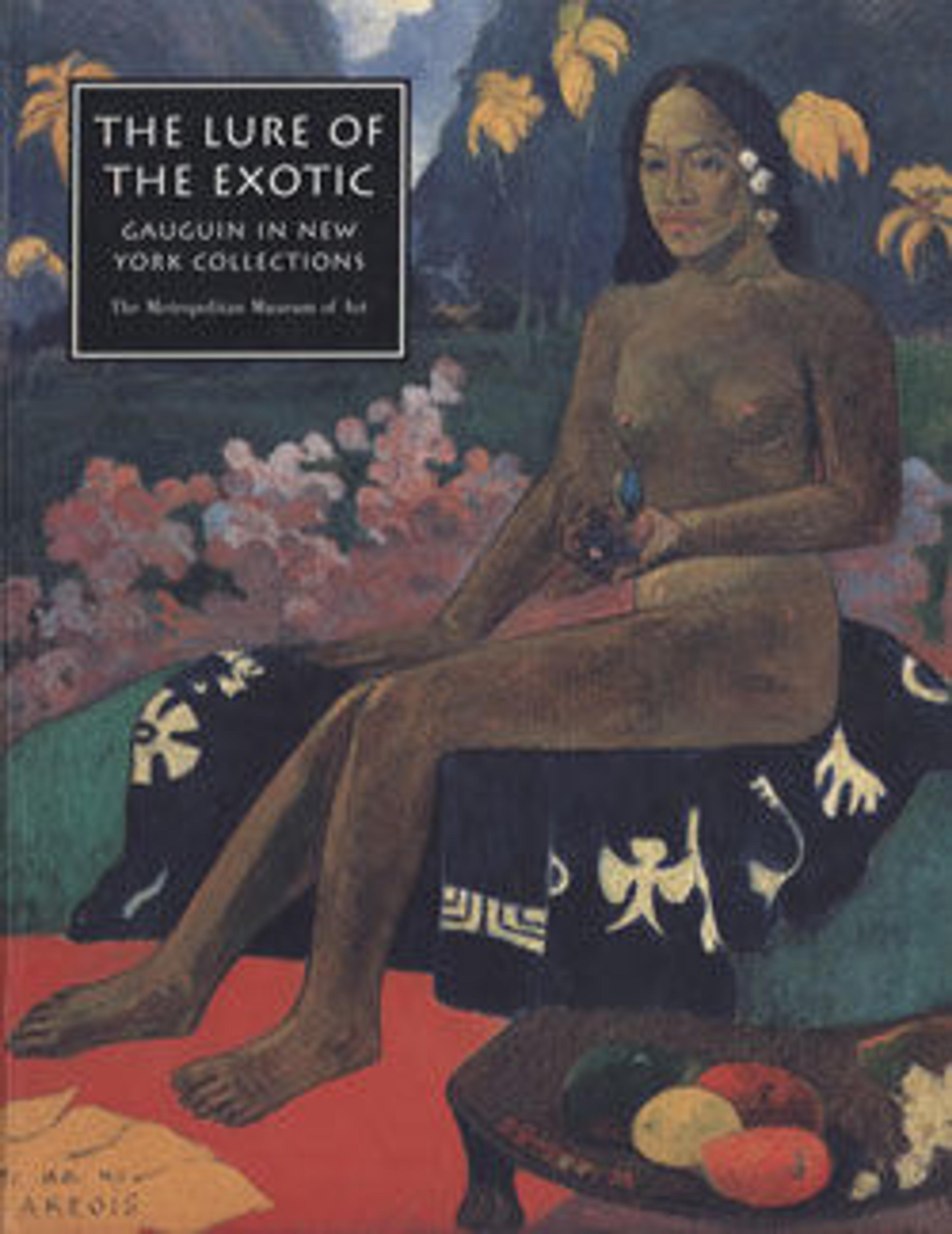The Artist's Portfolio, Pont Aven
Following his first trip to Tahiti, Gauguin returned to the village of Pont-Aven in Brittany, France, where he had found artistic inspiration early in his career. After fracturing his leg in a brawl, he was unable to stand at his easel long enough to paint and worked instead on drawings and prints, at least some of which he likely kept in this highly personal portfolio. He decorated the inside covers with watercolors of local subjects, including a mill and waterway, a family of geese, and a Cézannesque plate of fresh fruit in a style that recalls the highly simplified, abstracted landscapes of the pre-Tahiti period, with their swiftly rising planes and prominent serpentine lines.
Artwork Details
- Title: The Artist's Portfolio, Pont Aven
- Artist: Paul Gauguin (French, Paris 1848–1903 Atuona, Hiva Oa, Marquesas Islands)
- Date: 1894
- Medium: Two inside covers decorated in watercolor and gouache over charcoal with graphite on heavy gray wove (blotting) paper sewn to leather; leather binding inscribed in pen and ink with additions in watercolor; multicolored silk ribbons stitched into binding.
- Dimensions: each drawing: 16-3/4 x 10-3/8 in. (42.5 x 26.4 cm)
- Classification: Drawings
- Credit Line: Promised Gift of Leon D. and Debra R. Black, and Purchase, Joseph Pulitzer and Florence B. Selden Bequests, and 1999 Benefit Fund, 2000
- Object Number: 2000.255
- Curatorial Department: Drawings and Prints
More Artwork
Research Resources
The Met provides unparalleled resources for research and welcomes an international community of students and scholars. The Met's Open Access API is where creators and researchers can connect to the The Met collection. Open Access data and public domain images are available for unrestricted commercial and noncommercial use without permission or fee.
To request images under copyright and other restrictions, please use this Image Request form.
Feedback
We continue to research and examine historical and cultural context for objects in The Met collection. If you have comments or questions about this object record, please contact us using the form below. The Museum looks forward to receiving your comments.
